
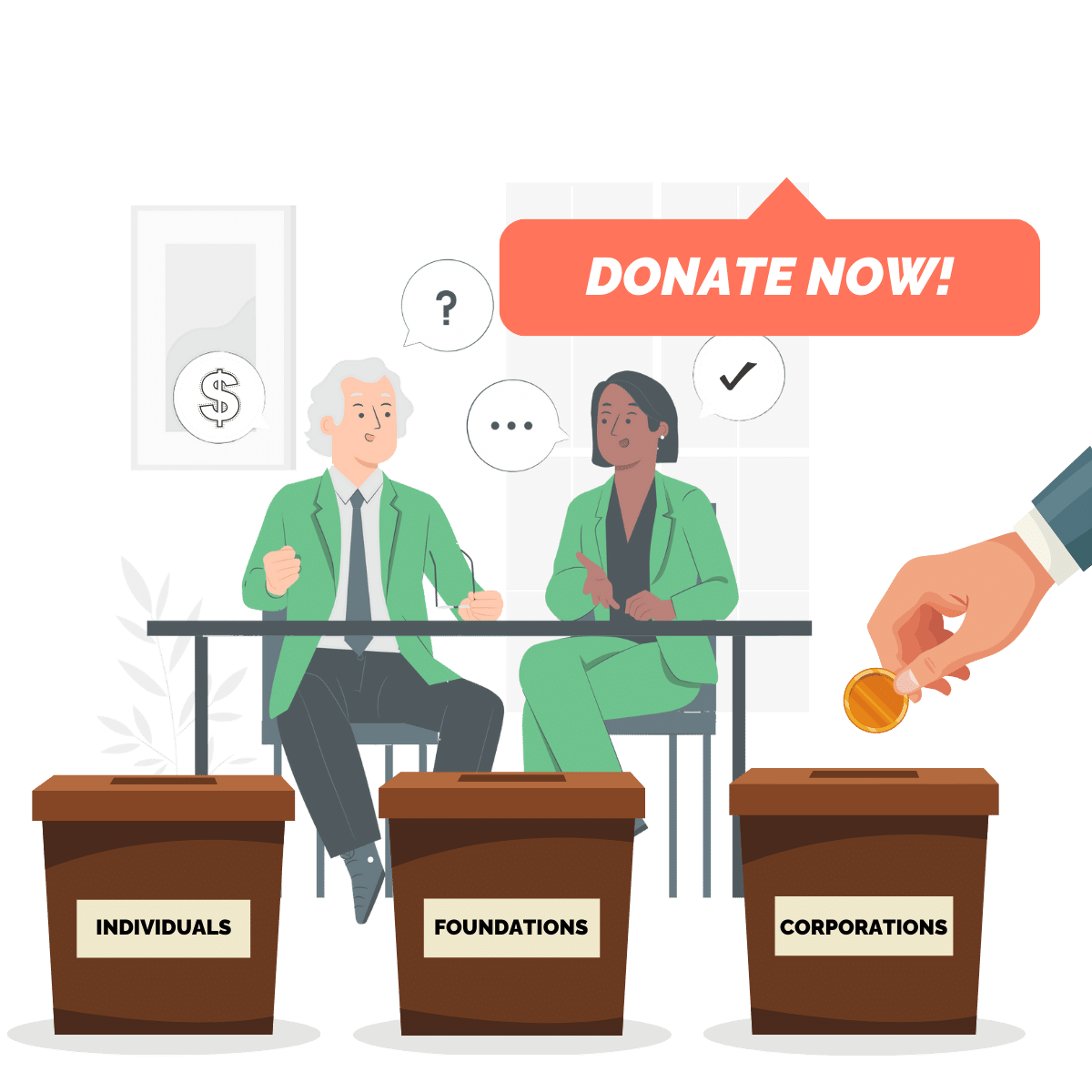
Nonprofits solicit donations from a wide range of sources. Understanding the nuances of each type of supplier goes a long way in guiding your appeal strategy.

Individuals—including one-time, repeat, and recurring donors—have the potential to be one of the most valuable sources of revenue for your nonprofit. In fact, recent fundraising research reports that individual Americans alone give between $300 and $500 billion each year to charitable causes. That’s an estimated 64% of total giving!
This generally includes (but is not limited to) individual donations made via:
Regardless of gift size or method used, these contributions provide much-needed support and funding to power your operations. The important thing to remember, however, is that every donor is unique and valuable. Each one should be treated as a person rather than a wallet!
For the best results, aim to deepen your connection with individual donors. Engage each person in a number of ways, ultimately empowering your team to build long-term relationships that generate lasting support for your cause.

More and more, companies are giving back to provide their corporate philanthropy and corporate social responsibility (CSR) initiatives with a powerful boost. Your organization can be the beneficiary of that charitability. Sometimes, all you have to do is reach out and ask!
Businesses can support your organization in a number of ways, which include:
When you empower individual donors to partake in workplace giving programs on your behalf, you can leverage relationships with employees to build deeper partnerships with their employers, too.
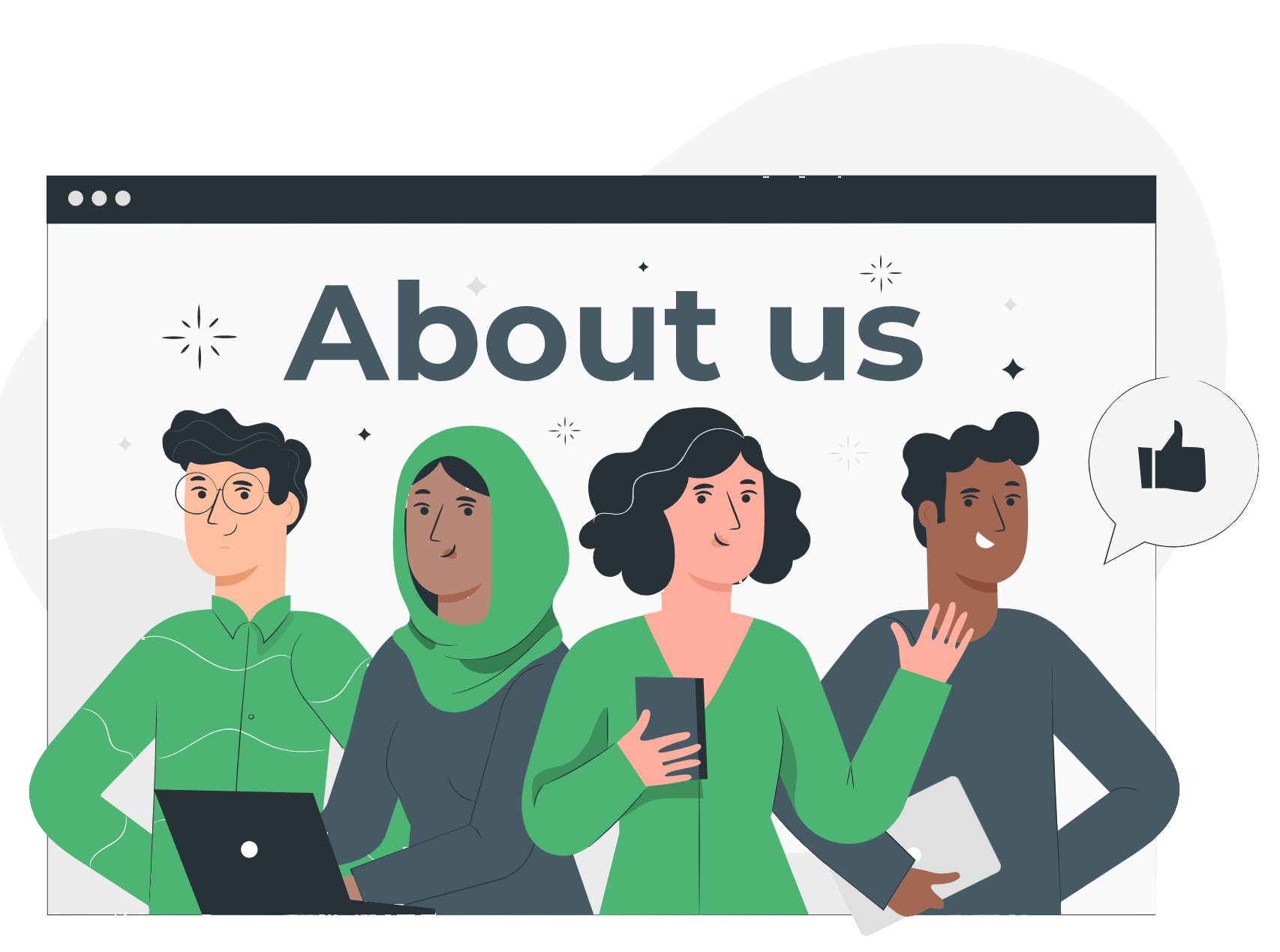
Foundations are nonprofit entities that award grants to help other nonprofits further their causes. They can stem from a company’s philanthropy (i.e., corporate foundations like the GE Foundation, which also runs the General Electric matching gift program) or be organized as a family-run entity (like the Bill and Melinda Gates Foundation).
Regardless, foundations provide nonprofit funding in a few key ways:
Most often, foundations contribute grants to nonprofits with missions similar to theirs. Nonprofits are typically required to utilize grant funding for a particular project or program and follow the foundation’s instructions for submission and use of funds. We recommend conducting prospect research on a regular basis to scope out the opportunities that may be available to you!
Online fundraising is the simplest, most cost-effective, and highly efficient way to solicit donations from anyone who has an internet connection. If your organization isn’t making use of the many online donation tools designed to collect funds online, it’s surely missing out.
Plus, asking for donations from individuals via online channels makes it easy for donors to give instantly to their favorite nonprofits and causes. These typically include a range of gifts, from small, monthly contributions to major donations and everything in between.
To maximize the benefits your organization receives from online fundraising, be sure to market your online donation form to your audience and encourage generous and convenient giving. Especially in the digital revolution of the last few years, online donation forms have become universal, much-needed giving tools. And they’re not going anywhere anytime soon, either!
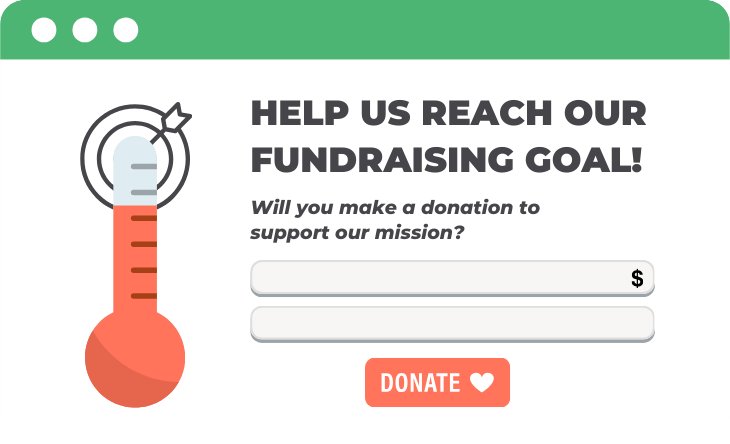
Start by developing an online donation page for your organization. While you may decide to build one from scratch, it’s generally more cost-effective to enlist the services of an online fundraising company. Do some research and determine the best solution for your team and its fundraising needs!
Then, begin actively promoting your donation form. Donors won’t know about it unless you tell them! Place a large “Donate Now” button prominently on your website and include a link to the page in donor-facing communications.
And don’t forget about marketing matching gifts on your website, either. By creating a dedicated matching gifts web page and adding a matching gifts blurb to your giving forms, you can increase program awareness and participation alike.
Finally, make sure your donation page works on devices like smartphones and tablets, too, as mobile giving (including text-to-give, QR codes, and mobile-responsive donation pages) is a popular preference among individual donors.
In today’s competitive landscape, paid advertising empowers an organization to stand out. Depending on your intended audience, you might enlist traditional methods to promote your fundraisers, like radio or print ads. However, online paid advertising allows you to tap into tons more prospects, even when it comes to targeting a local audience.
And, believe it or not, you can get started with paid advertising for free. After applying for the Google Ad Grants program, approved nonprofits receive $10,000 worth of free credits to spend on Google Ads each month (up to $329 per day).
Once you’re approved, choose keywords to target (i.e., things your audience would look up on Google), then write an ad that encourages readers to click through to your site. Google then places these ads at the top of the search engine results page for your chosen terms.
This is a great way to ask for donations, whether you’re connecting with new donors or retaining current ones. Promote your event pages, campaign pages, donation forms, or any other web pages that will push your mission forward.
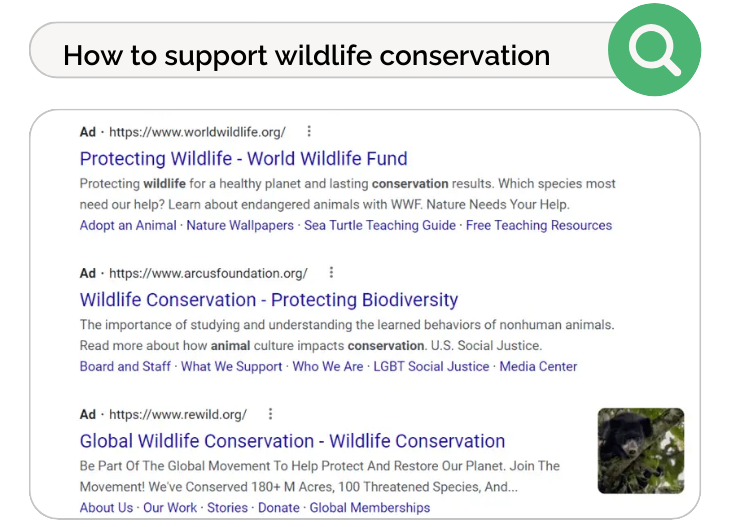
To get started, you’ll need a secure website that thoroughly explains your cause. Google has a strict website policy that you’ll need to follow, so make sure your site is up to par before applying.
Then, you’ll complete your application. This process includes:
Take some time to learn the basics of managing a Google Ad Grant account, create well-written ads, and devote 2 to 3 hours each month to ongoing maintenance.
If this seems like a lot to handle, a Google Ad Grants manager like Getting Attention can be a big help!
Emails are typically best suited for mass communication with donors on a regular basis. Though email is one of the most cost-effective ways to raise money, investing time and resources in the strategy is only worthwhile if you write great emails that make people want to give.
Fundraising emails can be sent to just about any supporter. However, they shouldn’t be used to ask for major gifts or as a substitute for face-to-face conversations. Instead, emails can be used to solicit small-dollar or mid-level contributions, invite supporters to attend upcoming events, send fundraising updates, and more!
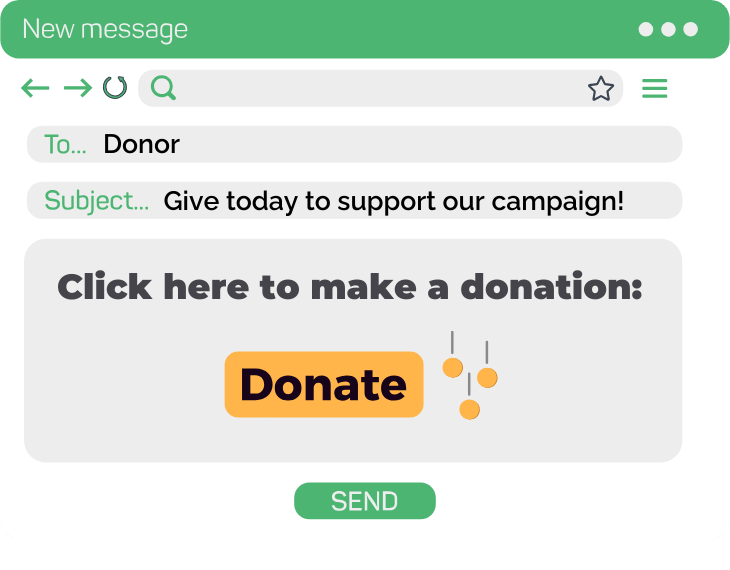
You’ll first need a list of donors’ email addresses if you want to start sending out email appeals. (Hint: Consider an email appends service to locate additional contact info for your supporters.)
Next, segment donors into appropriate groups based on characteristics like giving history, capacity, communication preference, etc. You don’t want to send the same email to a loyal supporter that you would a brand new donor. That would come across as impersonal and would be less likely to inspire the recipient to give.
Then, write a great email. Be sure to clearly state your fundraising need and how the donor can get involved. Don’t forget to link to your donation page!
Looking for a creative new way to solicit donations from your supporters? Sell fundraising cards to your supporters to raise some extra cash for your mission. By providing something in return for gifts, you’ll incentivize more donors to give.
While eCards can help your organization raise funds year-round, there’s really no limit on what you create designs for. To spark inspiration, some of our favorite card-worthy occasions include:
You have a few options for selling eCards to donors. Fundraising Letters’ guide to donation eCards explains that you can offer them post-donation or as integrated donation forms. The first strategy allows donors to pick their card, personalize it, and choose a donation amount. Meanwhile, the second strategy allows you to embed your eCards directly into your donation confirmation page as a unique reward!
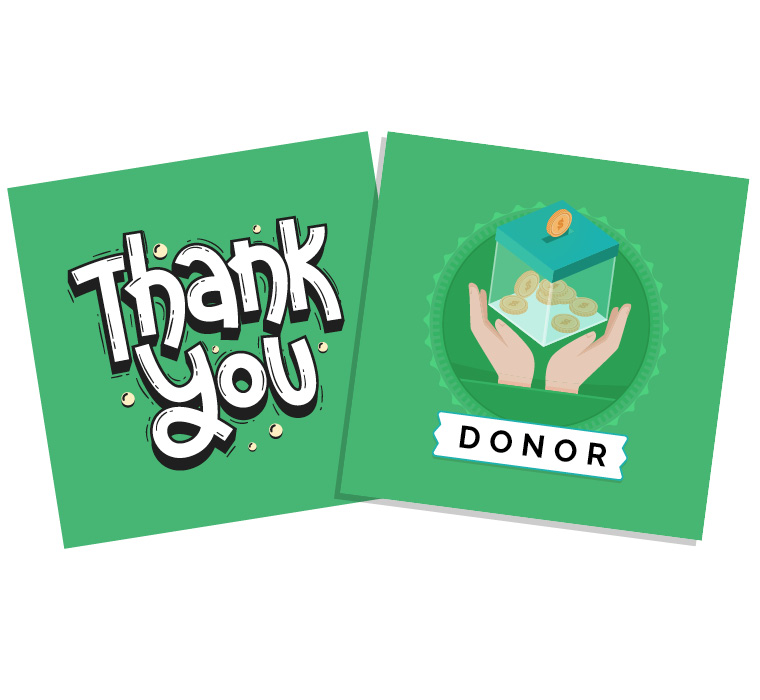
First, you’ll want to locate an affordable eCard creation tool. Ideally, use one that’s tailored to nonprofits (we recommend eCardWidget) to ensure you have all the user-friendly design tools you need from a solution that integrates with popular fundraising tools.
Next, design or customize eCards for any occasion you want. Don’t forget to infuse consistent branding, such as your organization’s color scheme, logo, and font choices, to strengthen the connection to your cause.
Finally, add the fundraising eCards directly to your site as a new page, on your donation form, or on your confirmation page. You can even add eCards to your Shopify store to sell them as fundraising products!
Asking for donations on social media is a more casual version of asking for donations via email. It’s a type of mass communication that you can use on a pretty regular basis.
As you plan your social media promotions, keep in mind that the best case scenario involves directing followers to your website to give via your online donation page. However, even if an individual doesn’t give, you’ve still put your organization’s mission at the top of their minds.
Having said that, you shouldn’t expect to receive a ton of major gifts from a donation appeal on Facebook. Using social media as a fundraising tool is often more about spreading the word about your cause, generating supporter interest, and initiating the cultivation or stewardship processes.
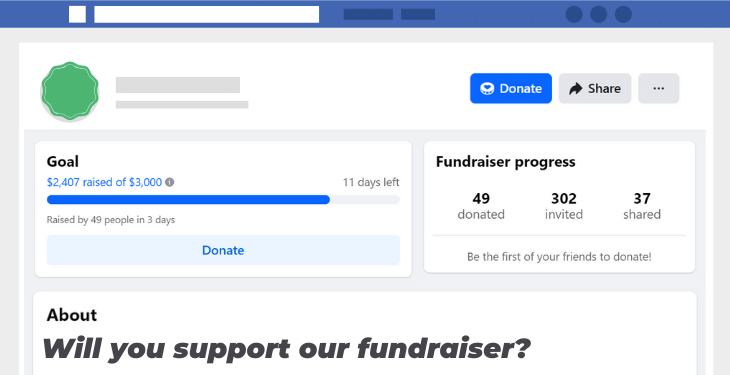
First, you’ll need to find a social media platform that works for you and your donors. While some social media sites contain integrated donation tools (meaning your donors can give directly through the platform itself), you’ll want to promote your online donation form on your social pages, too. If all of your supporters use Instagram, but your efforts are focused on Facebook, you’re missing the point.
Then, begin promoting your online campaign. Explain to your followers what you’re raising money for and how they can get involved (including by sharing your social post!).
You can even incorporate pictures and videos to help demonstrate giving impact and emphasize your nonprofit’s mission.
Direct mail, which includes sending fundraising letters, postcards, inserts, and more, is an old-school yet proven tactic for asking for donations from individuals. Even today, with the right strategy, snail mail to a select group can be a big hit.
Keep in mind that physical appeal letters don’t need to be sent to every donor and prospect in your database. Direct mail appeals lend a certain formality to a donation ask, which is important when soliciting a sizable donation from an individual or a business.
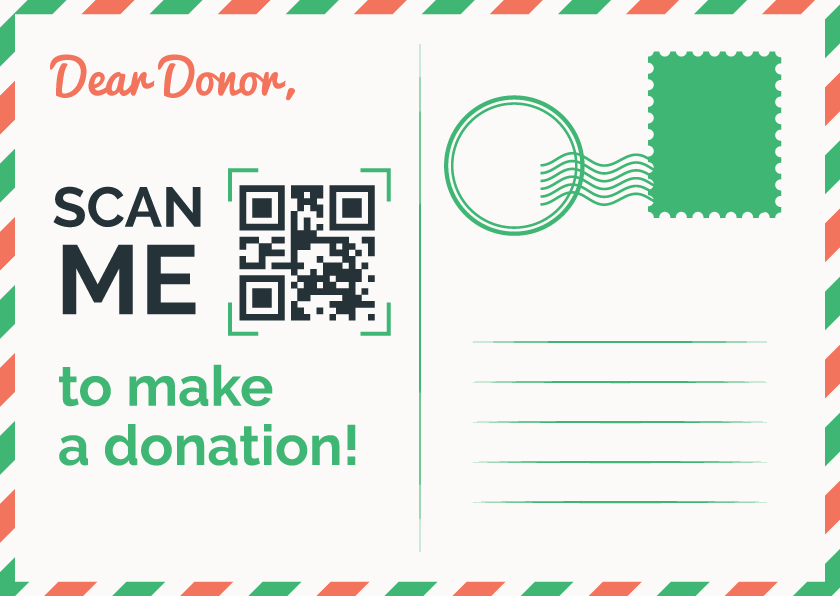
We recommend segmenting your contact list and using direct mail as a way to reach out to major donors, long-time supporters, and corporate partners.
Just remember to provide detailed instructions on how the recipient might take the next step to support your cause. For example, you might include…
This way, donors can make their gift as quickly and easily as possible.
You can even partner with a direct mail fundraising company to send your fundraising letters. Do your research and see if you can save your team time and money by outsourcing the work for less than it would cost to print and mail the letters on your own!
Using phone calls to solicit generous donations is a tried and true fundraising tactic. Why? You can host a phonathon at any point in the year! Plus, you never really need a reason to call up a few of your supporters and ask for their help.
In fact, individuals often respond well to being called and asked about donating. It’s a personal, easy, and direct way for donors to give and a relatively low-cost campaign for the organization to host.
Of course, there are optimal times for making a fundraising call, and it helps to gather information about your donors’ preferences. For example, one individual might prefer to have a conversation in the evening or on a weekend, while another may not take a call outside of regular business hours.
Either way, a phone conversation can be a good way to explain exactly what you’re going to do with a donor’s contribution. It’s also a great opportunity to talk up your organization and the specific campaign you’re running.
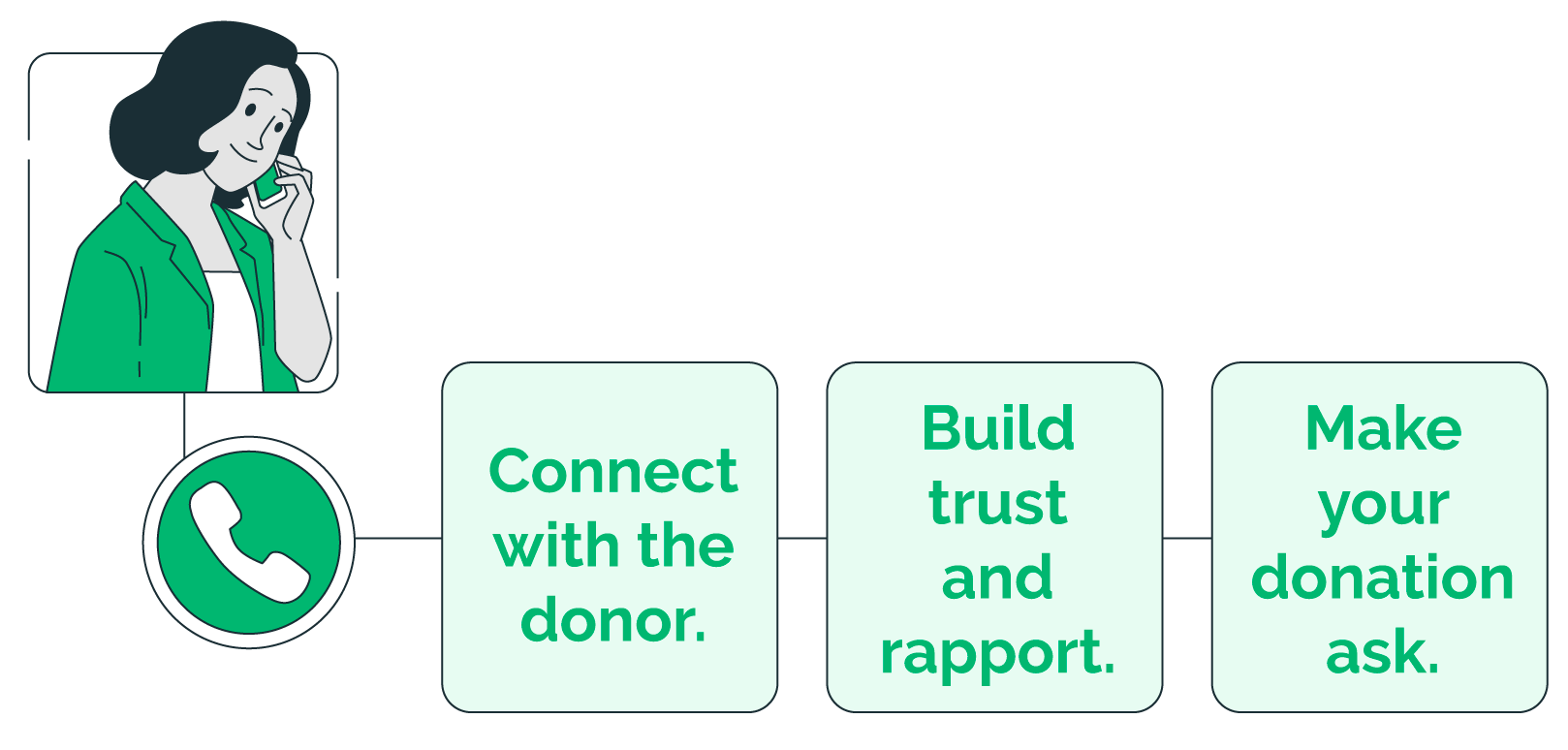
First, establish a plan that outlines how you’ll organize your phone fundraising campaign. Regardless of whether you’ll make calls on a case-by-case basis or host a dedicated phonathon, either supplies an invaluable fundraising avenue.
From there, you’ll want to begin developing your script. While phone conversations aren’t going to follow word for word, you’ll need to provide detailed notes to ensure callers stay on track for effective solicitations. Thus, it’s extremely beneficial for ensuring all fundraisers and staff manning the phones are well-trained and working from an engaging script.
In-person or face-to-face appeals are often reserved for major gift donors, but they can also be utilized for corporate donation requests, too! In fact, any sizable donation request should take place in a face-to-face conversation (if a prospect isn’t local to your area, a video meeting software like Zoom, Microsoft Teams, or Google Meet can suffice).
In-person meetings allow your nonprofit to properly lay out how you plan to use the donation in question. They’re your fundraiser’s chance to hype up your organization and the project or campaign that needs funding, plus answer any questions your prospect might have.
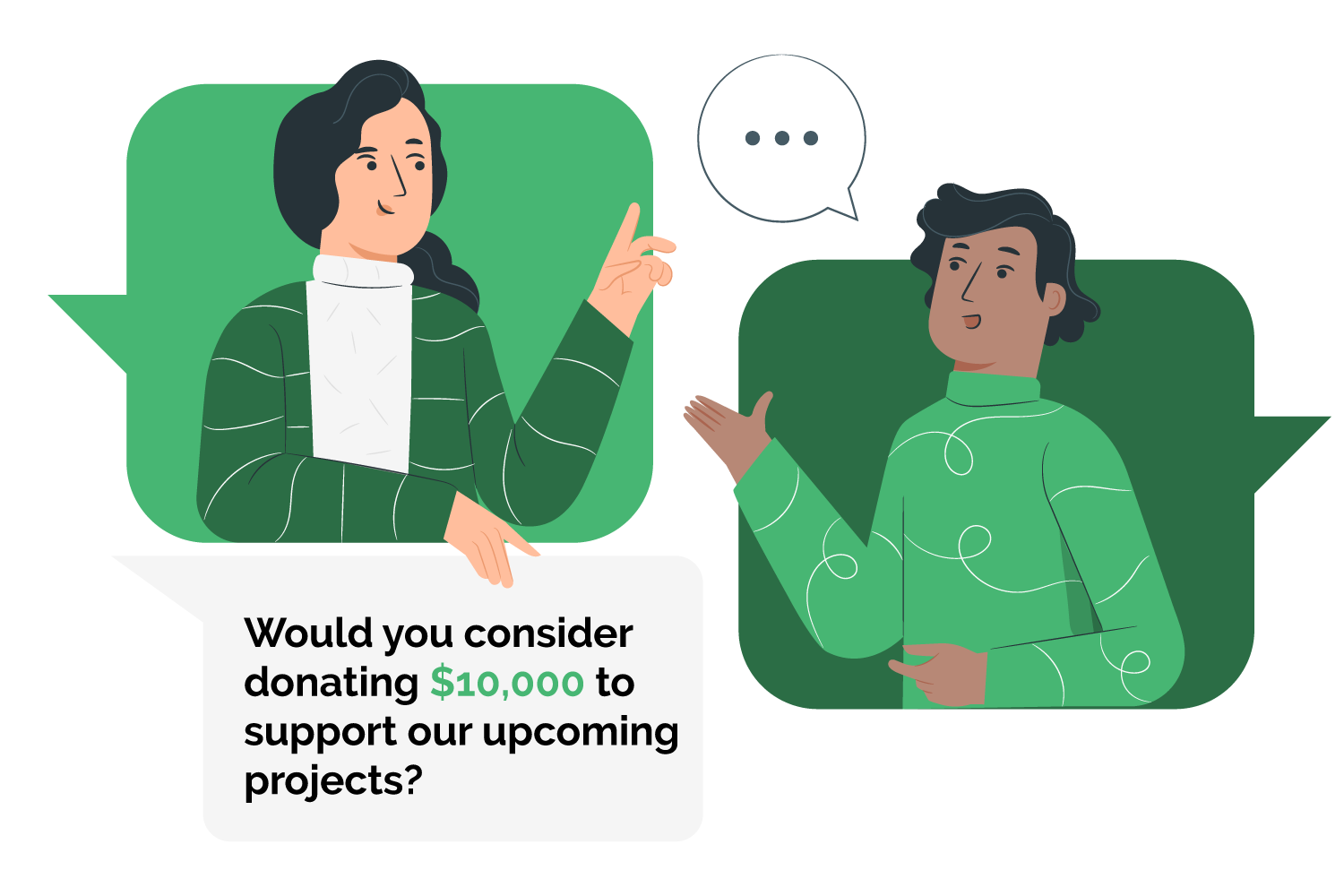
In-person donation appeals are usually reserved for major gift solicitation, so there will likely be a lot of preparation that goes into your face-to-face solicitations. Make sure that you fully research your prospect and come well-equipped for the meeting with a general script, notes, and an ask amount.
Remember that your donation request shouldn’t be too high (you don’t want to insult or otherwise put off the donor), nor should it be too low (you don’t want to leave money on the table).
Additionally, you’ll want to have an alternate plan for any answer other than an enthusiastic “Yes!” Consider adjusting the course of your conversation, asking for a lower amount, or offering another type of giving opportunity to maintain an individual’s engagement.
Asking your donors to buy branded merchandise is a great way to fundraise, and it provides a tangible incentive for donors to support your cause.
If you’re hosting a crowdfunding campaign, for example, establish giving levels that correspond with unique products. An individual who contributes $50 might receive a hat with your organization’s logo, while those at the $100 threshold may be gifted a limited-edition t-shirt.
Remember: donors feel incentivized to give when they’re promised something tangible in return. Plus, any time they wear or use their branded items, they can show off their commitment to your cause (see: free advertising!).
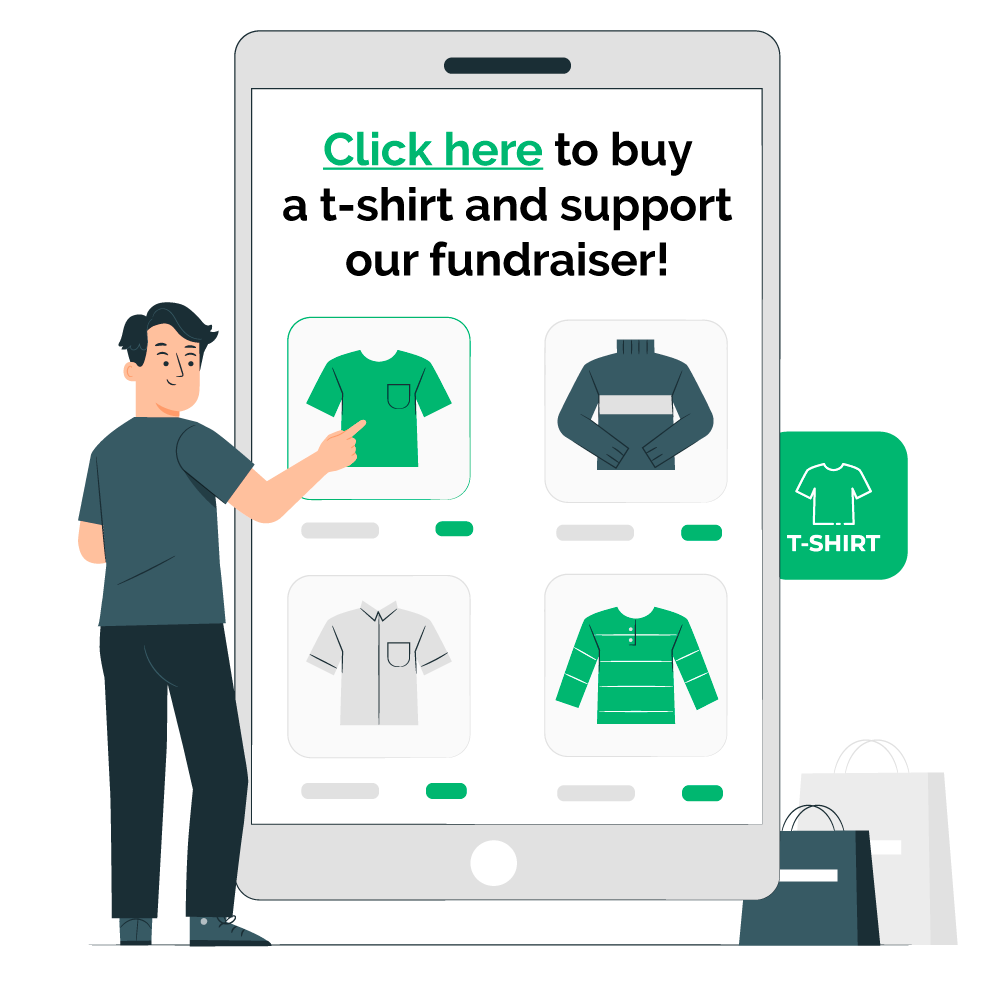
For apparel, you’ll need to create designs that fully encapsulate your nonprofit mission and align well with your organization’s brand. To incorporate a unique twist for your fundraiser, you can even host a design contest where supporters are encouraged to submit their t-shirt ideas and suggestions beforehand!
Then, set up an online storefront or campaign page through a product fundraising site or begin selling items at in-person events! Be sure there’s an easy way for donors to give above-and-beyond any product sales, too.
Finally, start driving traffic to your product fundraiser and encouraging supporters to place their orders.
Pledge campaigns or pledge drives are essentially time-based, high-intensity fundraising campaigns designed to drum up a lot of support quickly. The idea is to reach a wide audience of current donors and potential new supporters, encouraging as many individuals as possible to complete a gift after the drive ends.
Nonprofits often use pledge campaigns to raise support in direct response to a crisis. Think disaster relief, political advocacy, or a logistical emergency that your organization or its beneficiaries might be facing. Time-sensitive needs work particularly well here!
Some organizations, like public television and radio stations, also host very effective pledge drives as part of a broader annual campaign.
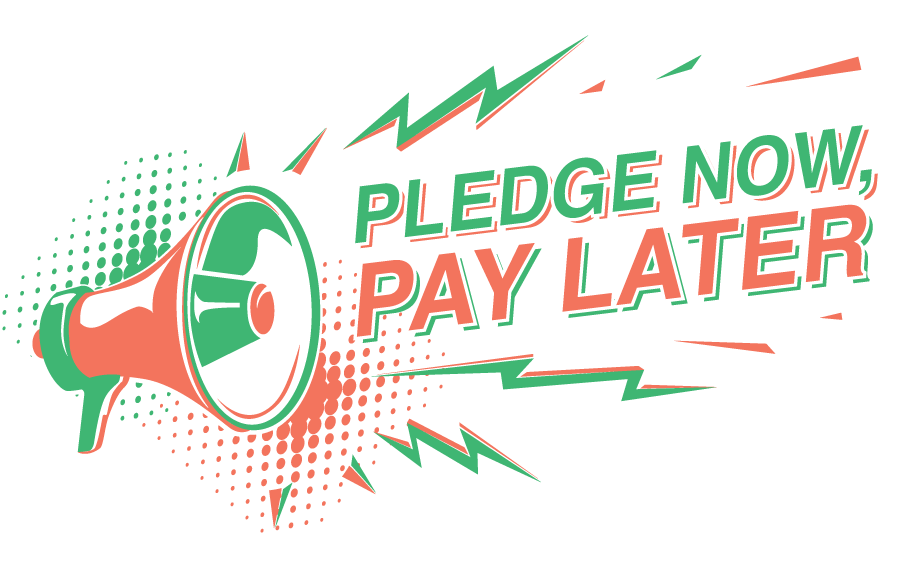
The first step in hosting a pledge campaign is to determine why your organization is hosting a pledge campaign. This will help inform your strategy and determine an ideal fundraising timeline. Then, get a campaign page set up using an online giving tool with pledge functionality.
Your team will want to source essential contact information from donors as they pledge their support in a way that doesn’t slow them down or hinder the completion of the pledge process. But you don’t actually collect payment details until after the campaign concludes!
(Note: Look for a platform that offers donors a “complete my donation now” option, but only after you’ve secured their initial pledges.)
Plus, keep in mind that pledge campaigns rely heavily on effective promotional efforts to succeed, so make sure your social media and other digital marketing outlets are ready to go. You might also want to review your data management systems to ensure you have the infrastructure in place to track and leverage all the pledge data you generate. Reaching new supporters is a major benefit of these campaigns, so you’ll need an organized way to follow up with them.
Matching gifts are generous philanthropy programs offered by thousands of corporations that employ millions of individual team members. That means a significant segment of your donor base likely works for such comanies, making their gifts eligible to go twice as far. Unfortunately, many qualifying donors remain completely unaware of the opportunity, leading to a ton of available match revenue going unclaimed each year.
When you incorporate matching gift promotions alongside a range of other individual giving channels, you have the potential to double the impact of each initial donation. So, if your organization is looking to maximize its fundraising revenue, a well-thought-out matching gift strategy is a must.
Here’s how it typically works: When an employee donates to a nonprofit organization, they submit a request to their employer, indicating the details of their donation. The employer then verifies the donation and matches it with an equal (or sometimes even greater) amount. This essentially doubles the contribution made by the individual, with additional funds being supplied by the donor’s employer.

To begin leveraging matching gift programs for your organization, there are a few key steps you can take. These include:
An effective matching gift effort can cultivate broader corporate partnerships, too! Nonprofits can leverage the donor data and connections produced by matching gifts to proactively engage with corporations in their network to establish or enhance other giving opportunities.
Get a sneak peek of the industry-leading matching gift automation solution, 360MatchPro.